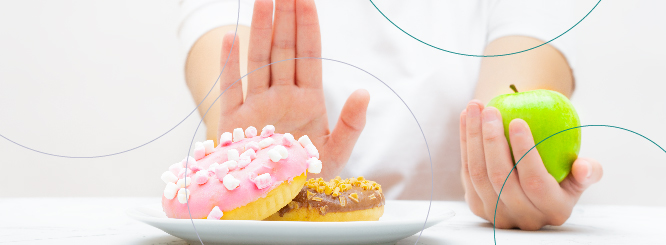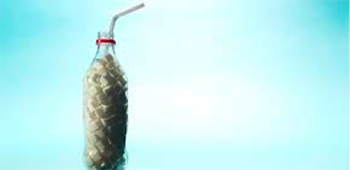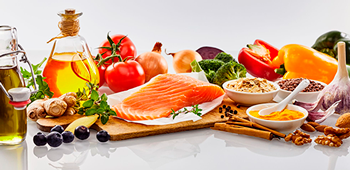
A healthy, well-balanced diet is something that everyone should have access to in order to lead the best lifestyle possible. Whole foods, such as fruit and vegetables, lean protein, grains, and legumes are ideal components for a person’s day-to-day meals; not only do they help maintain a healthy weight, but following a clean diet can reduce the risk of developing certain illnesses or conditions that can be damaging to a person’s well-being.
However, following a clean diet and sticking to whole foods is not as easy as one may think. There are several factors that contribute to people not having access to healthy meals, such as time constraints, food shortages, and a lack of nutritional education.
The amount of cheap and accessible snacks can also be detrimental to our health, not only because of how processed they can be, but also because of the amount of sugar most of them tend to have. There’s nothing wrong with having a sweet tooth and consuming several sugary snacks in a day is not reproachable, but falling into a pattern where your sugar consumption surpasses the suggested daily amount can be hazardous to your health. Which is why it’s important to reduce the amount of sugar we eat by doing a detox.
A healthy diet also means consuming a recommended amount of micro and macronutrients per day, and while these portions may look different according to your goals and needs, it’s likely that your health plan does not include foods that are high on sugar or added sugars.
It may also include low-sugar or sugarless options that will help you stick to the amount that’s recommended to do a sugar detox. At LIMARP®, we offer integral treatments that include detailed meal plans made just for you. Our medical team, led by Dr. Liza María Pompa González, is fully equipped to help you lead a healthy lifestyle by providing guided assistance when it comes to dieting and exercising. If you’re looking to reduce the amount of sugar you consume through a detox, the nutritionists will speak at length with you about your current diet and your goals in order to create a new diet plan.
This article will focus on sugar detox, how the body reacts to it, and some of the ways you can reduce your intake if it’s considerably high through a detox diet. The information discussed in this article is general and may not apply to everyone, which is why we recommend you speak to a nutritionist first if you’re interested in making significant changes to your diet or planning to do a detox.
Important Facts About Sugar
Our intention is not to villainize any food group, but to highlight the best options if you’re looking to follow a healthier diet. That being said, the first thing you should know is that sugar is not inherently bad and that its natural form can be found in both fruits and vegetables, as well as brown rice, milk, and cheese. Fruits and vegetables contain other nutrients, fiber, and water, which make them a healthy source of sugar.
According to the FDA[2], we should limit calories from added sugars to less than 10 percent of total calories per day; this means that we have to watch out for the foods that contain high percentages of added sugar, such as brown sugar, cane juice, corn syrup, dextrose, fructose, fruit nectars, glucose, high-fructose corn syrup, honey, lactose, malt syrup, maltose, maple syrup, molasses, raw sugar, and sucrose.
Added sugars are most commonly found in soft drinks, baked goods, and candy, which are some of the snacks many people tend to turn to, which makes it harder for some to limit or remove them from their diet. However, the sugar craving most of us get can be sated by consuming whole foods that contain natural sugar or products that aren’t heavily processed.
This can be done through a sugar detox diet, which we’ll explain below, as well as the amount of sugar one should eat per day.
Doing a detox doesn’t mean cutting sugar out of your diet from one day to another, but rather learning to identify which foods that contain sugar are actually good for your body. We recommend that you start reading food labels to make sure that you’re not consuming more sugar when you’re currently doing a detox.
Amount of Sugar Per Day
When you’re thinking about doing a detox, it’s important to learn the recommended amount of sugar one must consume per day. Keep in mind that this amount may vary according to factors like your daily calorie intake, activity level, and other health conditions[2] that may be aggravated by sugar.
We understand that it’s hard to keep track of the amount of sugar, or really any other food, throughout the day, which is why we also encourage you to lead an active lifestyle so that any high intake of sugar doesn’t affect your health.
However, if you have any other medical condition, like type 2 diabetes, it’s probable that your doctor may suggest that you considerably reduce your sugar intake per day or avoid it altogether. This doesn’t mean that you should stop consuming foods that contain natural sugar, but rather to watch out for sucrose, which can be usually found in table sugar or processed food. Your doctor may also suggest you reduce your sugar intake if you’re looking to lose weight because although “a small amount of fructose can also be taken up by cells and used for energy, the majority is carried to your liver where it is converted to either glucose for energy or fat for storage”[3].
Sugar Detox: What is It?
A sugar detox typically involves reducing your intake of added sugar for a specific amount of time. If you’re planning to implement drastic changes to your diet or don’t really know how to carry out a sugar detox, make sure to talk to a nutritionist so that they can instruct you. There are many benefits to doing a detox, as research has linked a high added sugar intake with various medical conditions, including obesity, diabetes, and heart disease, as well as poor dental health. According to a 2019 study[4], a detox can also be beneficial because sugar can also reduce your energy levels, leading to fatigue and reduced alertness during the day.
Doing a sugar detox diet may help protect against chronic disease development and boost your overall health. You may also experience cravings and other side effects that tend to go away after a time when going through a detox. Some of the side effects may bring forth physical and mental symptoms and they may look different for everyone. The symptoms, as well as their severity, will depend on how much added sugar you were consuming through sweetened foods and beverages.
Some people find that their symptoms last from a few days to a couple of weeks and as the body adapts to a low added sugar diet over time, the less intense your symptoms and cravings for sugar are likely to be[5].
The symptoms are worse at certain times of the day, such as between meals and stress may trigger cravings[6], which is a mental symptom. Other mental symptoms of doing a sugar detox include:
- Depressive episodes: This is partly due to a decrease in dopamine release.
- Anxiety: Feelings of anxiousness may be accompanied by nervousness, restlessness, and irritability.
- Changes in sleep patterns: Some people experience changes in their sleep when doing a sugar detox.
- Cognitive issues: People find it difficult to concentrate when going through a sugar detox, this can cause forgetfulness.
There are also physical symptoms while doing a sugar detox, such as tiredness, headaches, light-headedness or dizziness, nausea, and fatigue. Managing these symptoms can be hard, which is why we recommend the following tips to make your detox journey easier. First, focus on staying motivated, eating protein-rich foods, increasing your dietary fiber intake, staying hydrated, exercising, managing stress, and getting enough sleep.
If you’re noticing that the symptoms aren’t getting better during the sugar detox, make sure to contact your doctor right away to avoid further health complications.
How To Reduce the Sugar Intake Through a Detox
Here are some tips that may help you identify which foods have a high sugar amount and how you can replace them with healthier options while doing a detox. These are generalized suggestions and we recommend you speak to your nutritionist if you have any dietary restrictions or if you need a more specific detox diet plan.
So, which foods should you limit?
Soft drinks, such as sodas, and fruit juice contain up to ten teaspoons of sugar and they’re some of the most consumed drinks worldwide. To replace them, we suggest drinking water instead and to avoid adding sugar to your coffee or tea; if you’re in the mood for something fruity, you can try canned fruit that doesn’t contain any added sugar. Candy, baked goods, and low-fat food are also very high in sugar, which is why we recommend reducing their intake and to look for alternatives.
When it comes to sweeteners, some natural alternatives include stevia and monk fruit; you can also try other alternatives to sugar in your recipes, such as cinnamon, vanilla, or ginger. Another recommendation is to read the nutrition labels of the products you consume in order to be aware of the amount of sugar they contain and to make sure you don’t surpass what you’re supposed to eat per day while going through a detox.
Contact Us to Learn More
If you want to learn more about the sugar detox and need guidance to begin a healthy diet, schedule an appointment with one of our doctors. We can help determine the right treatment for you. Contact us online anytime or give us a call at (619) 373-0229.
References
[1] “Added Sugars on the New Nutrition Facts Label”. https://www.fda.gov/food/new-nutrition-facts-label/added-sugars-new-nutrition-facts-label. (Accessed May 27, 2023).
[2] Paglia L. The sweet danger of added sugars. Eur J Paediatr Dent. 2019 Jun;20(2):89. doi: 10.23804/ejpd.2019.20.02.01. PMID: 31246081.
[3] Tappy L, Lê KA. Metabolic effects of fructose and the worldwide increase in obesity. Physiol Rev. 2010 Jan;90(1):23-46. doi: 10.1152/physrev.00019.2009. PMID: 20086073.
[4] Daniel J. Reis, Stephen S. Ilardi, Michael S. Namekata, Erik K. Wing, Carina H. Fowler, The depressogenic potential of added dietary sugars, Medical Hypotheses, Volume 134, 2020, 109421, ISSN 0306-9877, https://doi.org/10.1016/j.mehy.2019.109421.
[5] Apolzan JW, Myers CA, Champagne CM, Beyl RA, Raynor HA, Anton SA, Williamson DA, Sacks FM, Bray GA, Martin CK. Frequency of Consuming Foods Predicts Changes in Cravings for Those Foods During Weight Loss: The POUNDS Lost Study. Obesity (Silver Spring). 2017 Aug;25(8):1343-1348. doi: 10.1002/oby.21895. Epub 2017 Jun 15. PMID: 28618170; PMCID: PMC5529244.
[6] Ulrich-Lai YM. Self-medication with sucrose. Curr Opin Behav Sci. 2016 Jun;9:78-83. doi: 10.1016/j.cobeha.2016.02.015. PMID: 26977424; PMCID: PMC4787559.


